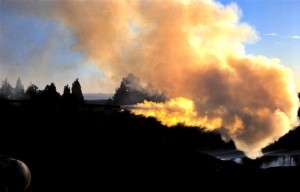Time and chance taketh us all. That came home this week as I lost a cousin who was two months younger than me. Now the royalty owner has to just “tough it out”. It is not the time to panic or to think that your mineral rights are suddenly “worthless”. I have been watching in Arkansas as folks are selling out to some Texas royalty firms for as little as $300. Why? I can only guess but I doubt it is out of desperation. More likely, they have only one or two wells, drilled perhaps five or more years ago, and the check has dwindled down to a few dollars. To them the property has become worthless. That is not true.
Some Arkansas terminology. Pooling is the common term used in most states but the process is called unitization or integration in Arkansas (in addition to pooling.) It basically means the same thing. Pooling laws in the state allows all mineral owners in a section to be integrated into a drilling unit. And everyone is required to participate in some way or another. One person cannot prevent the rest of the pool from developing their mineral rights, or as the courts put it, to “enjoy” their minerals.
Every drilling unit in the Fayetteville is allowed up to 16 operating wells in the Fayetteville Shale plus one additional well in another zone under B-43 rules. The long laterals that post-date the adoption of B-43 means for practical reasons, 8 wells will likely be sufficient to drain the entire unit. A drilling unit is usually 640 acres – matching the Public Land Surveying System of one square mile. Keep in mind that there is no such thing as a “square acre”. This goes all the way back to the survey methods from England. Until King Henry VIII, survey was by landmarks. About this time a monk created a system of measurements where a chain was a length of 66’ and there were 100 links in each chain. The rod was 16½ feet or one-fourth of a chain. Ten square chains (not 10 chains square which would be 660’ x 660’ or 10 acres) made an acre.
If you have income from only one well, then there are more places to be drilled in that unit. Intuitively, we know that gas is not locked in place. However, shale gas is less mobile than gas found in a sandstone reservoir with high porosity. One strategically-placed well might drain a large part of a sand body. That is not the case for shale gas. It generally has to be hydraulically fractured. Virgin pressure may exist on the opposite side of a section from a single well.
You have to think like the oil company at this time. They leased a lot of land. They had only a few years to perfect the lease with an operating well. You do not develop all the wells. The driller will develop the minimum number of wells that will serve to hold by production (HBP). That usually means one well per section and then coming back after that well is nearing the end of its economic life to drill additional wells.
This means during the frenzied years of the peak play, hundreds of wells were drilled only one per section. After holding the best acreage they may decide some wells were not economic and they will release (not re-lease) the leases. The HBP lands will then be developed in time.
Today that means drilling from two to four or more wells on one pad. These oversized pads are ultimately smaller footprints on the land and serve to decrease drilling costs while minimizing environmental surface damage. That is when the surge of gas will be greatest.
Thus, if you have only one well on your property and your check has dwindled to almost nothing. Take heart. They will eventually drill more wells or let the lease expire. But if you think that last check is going to be as good as it gets, you may just be selling out for less than 1% of what you could have gotten. And, those folks in Texas? They just made a killing. So if you have any of that dwindling Fayetteville gas rights you want to sell for $300, give me a call. At least I will keep the money in Arkansas.
So back to my first sentence. Don’t panic, don’t sell, and don’t guess (chance). As Bat Masterson once said, “Take your time, and don’t miss.”

Iconic One Pro Theme | Powered by Wordpress
